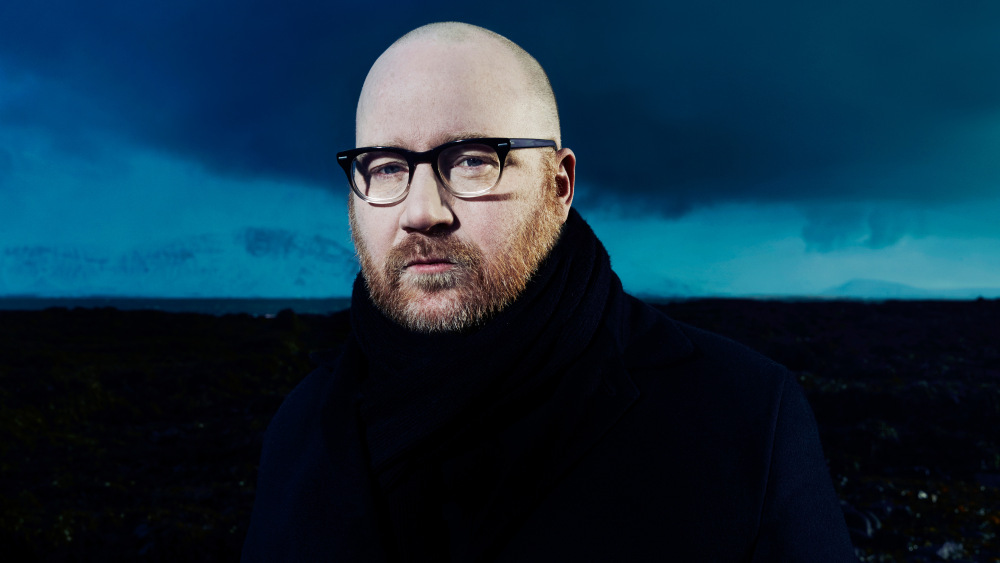In this piece, RE Katz reflects on the life and works of Jóhann Jóhannsson, who passed away recently after releasing his most successful solo album Orphée, and the spectacle of hope which his work provides.
___________________________
Guest post by RE Katz of Soundfly‘s Flypaper
Perhaps it’s fitting that the untimely death of composer Jóhann Gunnar Jóhannsson is shrouded in silence and rumor. We do not know why he died so young, we just have the one repeating syllable in our heads. We have this one soaring melodic line, these shimmering strings.
Just over a year ago, he released his last and, by the numbers, most beloved solo album, Orphée, which was based on Ovid’s interpretation of the myth of Orpheus.
In an interview and live performance on Seattle’s KEXP in 2017, he discussed the threshold at the heart of the myth — what he imagined it would be like to cross into the world of the dead, “this transformation, going from one state to another.” He described this as a very personal record, which is “why it took so long to get it into a shape that was right.”
When the interviewer asked him whether or not he feels a composition can ever be finished, he responded quite simply, yes:
“It’s finished when it needs to be finished.”
Just let that line sit for a minute before reading on…
His music has been called haunting, holy, hypnogenic, overwhelming but never chaotic; but despite the myriad ways his music evokes that threshold of existence, Jóhannsson as an artist moved away from the sentimental. He often spoke of wanting to create music that never needs explanation. And so it seems the best and only way to mourn his loss is to listen.
Jóhannsson was always a deeply conceptual composer, working with narrative and color, and cinematic scenography, even when composing outside of his acclaimed scoring work. It’s why his work so naturally expanded into collaborative and experimental projects in dance, theater, film, and video. Long before he worked with sound, he was a student of language and literature, and these twin influences run through his solo albums like a double helix.
These are the sorts of elements that help map the musical mind of Jóhann Jóhannsson.
The best way to experience the full atmosphere of a Jóhannsson piece is to let oneself be enveloped in it the way he intended. We must watch the choreography. We must see the films. Jóhann’s music delivers to the listener the immersive sensory experience of living.
While listening to Fordlandia, for example, take some time to learn about the absurd colonialist dream of Henry Ford and his Brazilian rubber plant. Get into it: read and write a bit about failed utopias and unfulfilled promises.
While listening to the rocky expanse of IBM 1401, A User’s Manual, try to remember a time before the internet. Take yourself back to the sounds of early computers, those uneven electromagnetic impulses. Imagine the string quartet playing the part of a reel-to-reel tape machine from thirty years ago. Now imagine the whole thing as a dance.
While listening to The Miner’s Hymns, don’t just watch the film that the soundtrack was created for. Spend some time with big brass instrumentals. Watch videos on the golden years of mining in Northern England, read about mining disasters, read about the lives of miners: Now imagine yourself taking the elevator down into the mine shaft and breathe in the sulfurous air. There. Now you’re inside a Jóhannsson composition.
Why are we haunted by long stretches of rhythmic circling? How are we undone by a five-note melodic line? How does one background chord come forward to swallow the entire orchestra? Jóhannsson’s music does not answer these questions — it asks them.
Between 2014 and 2016, Jóhannsson composed award-winning scores for The Theory of Everything and Arrival, and prior to that, he worked with Denis Villeneuve on his films, Sicario (2015) and Prisoners (2013). In all of these long-form film music works, he communicates a stark aliveness, making use of vast expanses of shadow alongside saturated color as musical effects and devices.
Arrival‘s score, in particular, was expertly and experimentally conceived as a series of themes centered around the human voice singing non-linguistic sounds.
Both of these films feature very different human stories about trying to harness time — human beings trying to save themselves through understanding the greater nature of reality. I can think of no contemporary composer who was better suited to score the desperation, isolation, and driving emotional struggle at the heart of these films. And what makes the work truly remarkable is the coup his soundscapes spark in the collective imagination. This coup could be called “hope.”
As we listen to Jóhannsson now that he is gone, let us learn to hold space the way his music holds space for desolation, and for what necessarily follows, the spectacle of hope.

—
RE Katz exhibited Boywitch Codex: Hypertexts as Artist in Residence at Dreamland Arts in Buffalo, NY in February 2017. Katz is interested in personal fashion, antifascist witchcraft, and television.